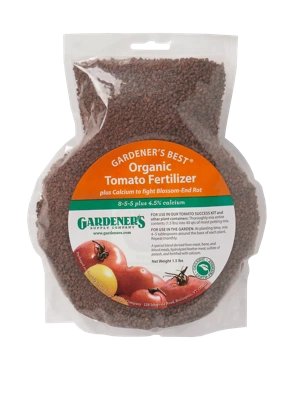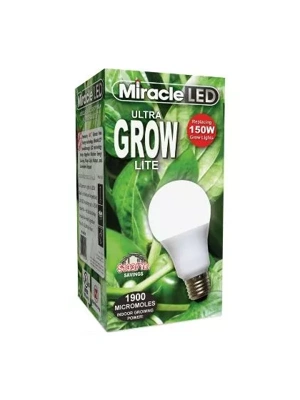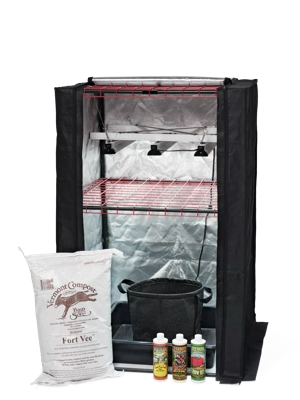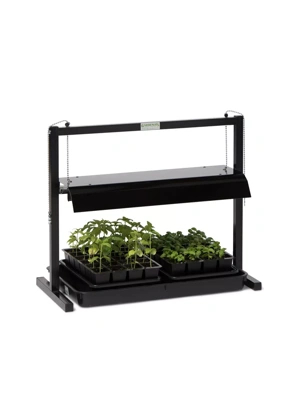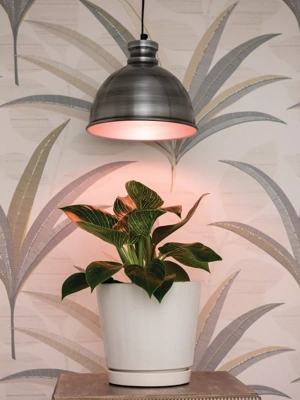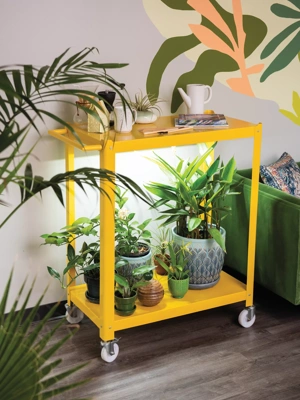How to Grow Lettuce Indoors
Grow a salad on a sunny windowsill or under grow lights
There's nothing quite like the taste of fresh-picked greens, straight from the garden. For most of us, that's a pleasure reserved for spring through fall. However, salad lovers can grow lettuce indoors, all winter long. Depending upon available sunlight, even urban gardeners can raise a steady supply of your favorite greens on a windowsill or beneath grow lights. Let's walk through how to grow lettuce indoors:
5 Steps to Growing Lettuce Indoors
1. Get your grow light out
Lettuce needs FULL SUN to really thrive — a south-facing window is a must, if you plan to grow on a windowsill. Most of us don't have sunshine in our house for 12 hours per day, which means it's time to plug in a grow light. Tabletop grow light systems are perfect for growing small crops of lettuce. Larger light gardens, such as our Vermont-made SunLite® systems, will accommodate even more growing trays.
Your chosen location must also be a safe one. Pick a spot away from active heat sources and cold drafts, and inaccessible to mischievous, hungry pets.
2. Choose your container, growing medium and seeds
 Lettuce seedlings at two weeks
Lettuce seedlings at two weeksFlat, fairly shallow containers with good drainage are ideal. Other options include 4" to 6" plastic pots or a multi-cell seed-starting system (as shown in our slideshow, above). You can also recycle produce containers or take-out dishes, some of which come with clear covers handy for seed starting. Wash them well and poke a few holes in the bottom for drainage.
For soil, choose a planting mix that's made for seed starting, such as Seed Starting Mix. Do not use garden soil or "potting soil," which is often too coarse for seed starting.
When it comes to choosing seeds, some varieties are better suited to indoor growing. Look for loose-leaf varieties, such as Baby Oakleaf, Tom Thumb and Black-Seeded Simpson. Some varieties are known to grow well in winter light, such as Arctic King, Winter Marvel and Winter Density. You can also try growing other salad bowl favorites, such as spinach, arugula (Astro is a variety that does well indoors) and mesclun. Avoid head lettuces, which are difficult to grow indoors.
3. Plant and wait
 Lettuce seedlings at three weeks
Lettuce seedlings at three weeksMoisten the soil to prepare it for planting, then fill containers with about 3-4" of prepared mix. Scatter seeds on top of the mix or arrange seeds in rows, trying to keep them about an inch apart. Cover the seeds in a very thin layer of planting mix. If you're using a multi-cell seed starting system, plant three or four seeds in each cell.
Place your containers in a warm location, on a small tray to collect excess water. To maintain moisture, cover them loosely with plastic wrap or a lid. Check daily for signs of sprouts. Once sprouts appear, remove the cover and thin the seedlings so they're about an inch apart. Scissors work well for this task. Keep the seedlings moist but not overwatered.
4. Monitor growth and make adjustments
 Tender lettuce, ready to harvest at four weeks
Tender lettuce, ready to harvest at four weeksLettuces are delicate and require extra attention when grown indoors. Your seedlings should look green and robust; leggy, yellowed plants are light-starved. Once your tiny plants have their first set of true leaves, start feeding them with a mild diluted fertilizer such as a 5-5-5 NPK. Monitor the moisture level to make sure your seedlings are moist but not waterlogged. A seed-starting system with a wicking mat and a water reservoir makes it easy to keep your lettuce watered.
5. Harvest!
In about three to four weeks, indoor baby lettuce should be around 4" inches tall and ready to harvest. Because lettuce is perishable, cut only what you need. Starting with the outer leaves first, trim each leaf at the plant's base, about an inch from the soil. Leave the remaining leaves to grow for a few days longer. When the harvest is complete, plant another set of seeds.
Last updated: 04/03/2024
Print this Article:
Related items
Get the Dirt
Stay up to date on new articles and advice. Please fill out the information below.


